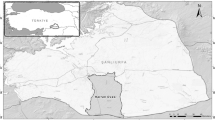Abstract
Irrigation of paddy has been practised for centuries in Bali, based on the use of upland weirs for diverting river waters to irrigate downstreams lands ranging from upland terraces to flat coastal plains. While in earlier times, traditional irrigation practices have met the island's food needs, in recent decades an increasing population has increased food requirements to levels surpassing the productivity of traditional methods. Government assistance programs were initiated beginning in about 1960, and a major new program, called the Bali Irrigation Project, is now being implemented. These programs recognize that little additional farm lands will be available, hence their objective is to increase productivity through intensified agriculture, including the use of high-yield rice varieties and increasing amounts of agricultural chemicals, including both fertilizers and pesticides. The feasibility study for the Bali Irrigation Project included an evaluation of the pollutional effects of agricultural chemicals used in Bali. The study showed that past use of ‘hard’ organochlorides has pervasively polluted the island's soil and water resources and, while the Government's programs now use only relatively degradable chemicals, considerable environmental damage has already occurred and much care will be needed in avoiding the use of hard toxics in the future. The study also indicated no adverse effects from increased use of fertilizers.
Similar content being viewed by others
References
‘Environmental Impact Assessment, Bali Irrigation Project’, by Institute of Hydraulic Engineering/H. Ludwig for DGWRD, Bandung, Indonesia, January 1981.
‘Bali Irrigation Study, Final Report, Annex A, Agronomy’, by Bali Irrigation Study Team for DGWRD, Denpasar, Indonesia, December 1977.
‘A Primer on Agricultural Pollution’, Soil Conservation Society of America, Ankeny, Iowa, 1971, 22 pp.
J. R., Sanborn et al. ‘The Degradation of Selected Pesticides in Soil: A Review of the Published Literature’, US/EPA Cincinnati (Ohio), August 1977.
C. A., Edwards, “Persistent Pesticides in the Environment, 2nd Edition’, CRC Press, Cleveland, Ohio, 1976.
H. F., Ludwig and Badruddin, Machbub. ‘National Water Quality Monitoring Program of Institute of Hydraulic Engineering’. Institute of Hydraulic Engineering, Bandung, 1978.
‘Water Quality Criteria, 1972’, US/EPA Publication EPA/R3/73/033/March 1973. U.S. Environmental Protection Agency, Washington, D.C.
‘Quality Criteria for Water’, U.S. Environmental Protection Agency, July 1976.
‘Report on Raw Water Quality, Jakarta Water Supply’, by H. Ludwig for World Bank, July 1982.
‘Monitoring of Pesticide Residues in Taiwan’, Gwo-Chen Li, Taiwan (1978).
Author information
Authors and Affiliations
Rights and permissions
About this article
Cite this article
Machbub, B., Ludwig, H.F. & Gunaratnam, D. Environmental impact from agrochemicals in Bali (Indonesia). Environ Monit Assess 11, 1–23 (1988). https://doi.org/10.1007/BF00394508
Issue Date:
DOI: https://doi.org/10.1007/BF00394508




